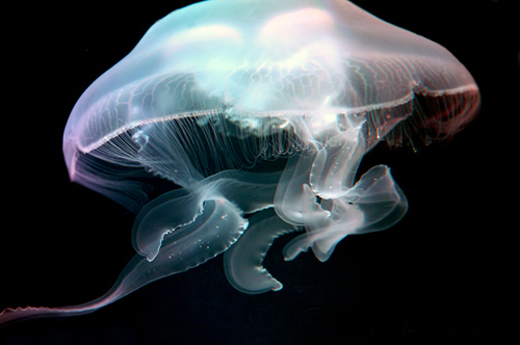
They have a very large stomach that allows them to swallow food whole and then for it to be broken down. They have hearty appetites and will consume food as often as they can. They will also consume eggs and various types of mollusks. Mollusks and plankton are what the Moon Jellyfish consumes.

Two Moon Jellyfish or Saucer jelly Moon Jellyfish Feeding Habits They have a thin body so various type of toxic materials can cause diseases and other health problems that they can’t overcome.

One of the factors that has been believed to kill large numbers of the Moon Jellyfish though is pollution. This could be due to the drop in various types of predators in those given locations. Canada and New England contain high populations.Įxperts do believe that their numbers have been on the rise for the past couple of decades. Europe and North America are the most common locations for them. They live in the warm waters as well as those that are cooler. You will find this particular species of Jellyfish living everywhere in the oceans. That is why they are often found in large numbers on the shore. This is due to them being at the mercy of the current and the wind though. However, there have been times when they are known to be in groups known as blooms. This particular Jellyfish tends to live alone. This certainly isn’t the physical appearance of what must of us have in mind when we think about a Jellyfish. However, many people in the water don’t even realize what they see. Those that know what they are looking for can avoid them. This particular type of Jellyfish tends to stay close to the surface of the water. They have also been able to develop the toxins in their bodies to be able to protect them from predators as well as to get their prey. Many experts believe that the overall functionality of the Moon Jellyfish has been able to adapt over time to changes in temperature and allocation. Where the branches have occurred to create the more than 1,500 species though are still unknown. There is evidence though to suggest that some species have been for million years. It isn’t fully understood how long the Moon Jellyfish has been on Earth. They don’t have a brain and only about 5% of their body is made up of anything solid. They have a centralized censoring system in their body that allows them to find prey. They may have stripes or spots when they are younger around the middle of the bell area. Due to the round look of them they are often referred to as the Saucer Jelly. When fully grown a Moon Jellyfish is typically from 25 to 40 centimeters wide. They have very short tentacles in terms of what other species of Jellyfish offer. They are very transparent too so when the sun or the moon is shining on them they look just like the moon does all lit up. Their body is white in color and round which gives it the moon shape. Watch a video of jellyfish in their natural habitat.There are four horseshoe shaped gonads that are found at the top of the bell for the Moon Jellyfish. (See jellyfish pictures from the National Geographic archives.) While they waited for specimens to arrive, the scientists practiced their experimental techniques on the much more common moon jelly.Īfter observing the jellyfish putting themselves back together, "I repeated the experiments several times because I thought I might have made a mistake," Abrams says.

Goentoro and colleagues could have easily missed their discovery: They had originally set out to study limb repair in Turritopsis dohrnii, also known as the immortal jellyfish. "This is an amazing study and a fantastic piece of detective work," says Sara Lindsay, a marine biologist at the University of Maine, who was not involved with the study. The scientists had stumbled upon a phenomenon completely new to science, which they call "symmetrization." Because jellyfish often suffer from injuries-sometimes inflicted by unsuccessful predators-symmetrization is an important method to heal themselves. Being symmetrical is crucial for moon jellyfish movement. Muscles in the jellyfish's body had pushed and pulled on the remaining arms until they were once again evenly spaced. Instead, the moon jelly had rearranged its six remaining arms until they were evenly placed around the body. (See " Pictures: 5 Animals That Regrow Body Parts.") The team expected that Abrams' moon jellyfish ( Aurelia aurita) had regrown its limbs, since many other marine invertebrates-including the polyp stage of moon jellyfish-regenerate themselves this way. advisor Lea Goentoro, a biologist at Caltech in Pasadena.

'You won't believe this, you've got to come here and see what's happening,'" recalls his Ph.D. In the spring of 2013, biologist Michael Abrams had cut two arms off a young jellyfish when he witnessed something he'd never seen before.


 0 kommentar(er)
0 kommentar(er)
